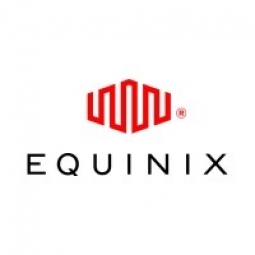Accelerating Payment Processing Solutions at the Digital Edge: A Case Study on Conductor and Equinix

Technology Category
- Networks & Connectivity - NFC
- Platform as a Service (PaaS) - Application Development Platforms
Applicable Industries
- Cement
- Retail
Applicable Functions
- Procurement
- Product Research & Development
Use Cases
- Construction Management
- Infrastructure Inspection
Services
- Cloud Planning, Design & Implementation Services
- System Integration
The Customer
Conductor
About The Customer
Conductor is a tech company specializing in electronic payment method solutions and processing services. Established 20 years ago as a brand and private label credit card processor, Conductor now has a complete ecosystem covering a wide range of activities within the purchase and payment chain, including retail, banking, financial institutions, financial technology, benefits and agreements. The company developed a groundbreaking business model, featuring products, services and solutions that work together, as well as a proprietary platform known in the market for its flexibility and agility. Conductor currently leads the Brazilian electronic payment processing market, growing approximately 40% per annum since 2012.
The Challenge
Conductor, a Brazilian company specializing in payment method solutions and processing, faced a significant challenge in raising the availability of its environment with a reduced staff. The company had previously migrated from its in-house operation to Equinix colocation environments in São Paulo International Business Exchange™ (IBX®) data centers. However, two years later, the company was struggling to maintain high availability with a smaller team. The challenge was to find a solution that would allow Conductor to continue to grow and innovate its payment processing solutions while maintaining high availability and performance.
The Solution
To address this challenge, Conductor collaborated with Equinix to create a solution that would allow the company to continue to grow and innovate its payment processing solutions. Equinix completely redesigned the environment and started managing the production environment at SP1 and the contingency environment at SP2. This allowed Conductor’s team to focus on the core business. Conductor has two payment method platforms: Conductor, its main payment platform, which is a hybrid between Equinix and Microsoft Azure, and MarketPay, a platform hosted at AWS. Both platforms use Equinix Cloud Exchange Fabric™ (ECX Fabric™) to directly, securely and dynamically connect to Microsoft Azure and AWS, with customized connectivity through a self-service portal or API. The company’s development and homologation operations also use ECX Fabric to create connections to Microsoft Azure.
Operational Impact
Quantitative Benefit

Case Study missing?
Start adding your own!
Register with your work email and create a new case study profile for your business.
Related Case Studies.

Case Study
System 800xA at Indian Cement Plants
Chettinad Cement recognized that further efficiencies could be achieved in its cement manufacturing process. It looked to investing in comprehensive operational and control technologies to manage and derive productivity and energy efficiency gains from the assets on Line 2, their second plant in India.

Case Study
Improving Production Line Efficiency with Ethernet Micro RTU Controller
Moxa was asked to provide a connectivity solution for one of the world's leading cosmetics companies. This multinational corporation, with retail presence in 130 countries, 23 global braches, and over 66,000 employees, sought to improve the efficiency of their production process by migrating from manual monitoring to an automatic productivity monitoring system. The production line was being monitored by ABB Real-TPI, a factory information system that offers data collection and analysis to improve plant efficiency. Due to software limitations, the customer needed an OPC server and a corresponding I/O solution to collect data from additional sensor devices for the Real-TPI system. The goal is to enable the factory information system to more thoroughly collect data from every corner of the production line. This will improve its ability to measure Overall Equipment Effectiveness (OEE) and translate into increased production efficiencies. System Requirements • Instant status updates while still consuming minimal bandwidth to relieve strain on limited factory networks • Interoperable with ABB Real-TPI • Small form factor appropriate for deployment where space is scarce • Remote software management and configuration to simplify operations

Case Study
Digital Retail Security Solutions
Sennco wanted to help its retail customers increase sales and profits by developing an innovative alarm system as opposed to conventional connected alarms that are permanently tethered to display products. These traditional security systems were cumbersome and intrusive to the customer shopping experience. Additionally, they provided no useful data or analytics.

Case Study
How Sirqul’s IoT Platform is Crafting Carrefour’s New In-Store Experiences
Carrefour Taiwan’s goal is to be completely digital by end of 2018. Out-dated manual methods for analysis and assumptions limited Carrefour’s ability to change the customer experience and were void of real-time decision-making capabilities. Rather than relying solely on sales data, assumptions, and disparate systems, Carrefour Taiwan’s CEO led an initiative to find a connected IoT solution that could give the team the ability to make real-time changes and more informed decisions. Prior to implementing, Carrefour struggled to address their conversion rates and did not have the proper insights into the customer decision-making process nor how to make an immediate impact without losing customer confidence.

Case Study
Ensures Cold Milk in Your Supermarket
As of 2014, AK-Centralen has over 1,500 Danish supermarkets equipped, and utilizes 16 operators, and is open 24 hours a day, 365 days a year. AK-Centralen needed the ability to monitor the cooling alarms from around the country, 24 hours a day, 365 days a year. Each and every time the door to a milk cooler or a freezer does not close properly, an alarm goes off on a computer screen in a control building in southwestern Odense. This type of alarm will go off approximately 140,000 times per year, equating to roughly 400 alarms in a 24-hour period. Should an alarm go off, then there is only a limited amount of time to act before dairy products or frozen pizza must be disposed of, and this type of waste can quickly start to cost a supermarket a great deal of money.







